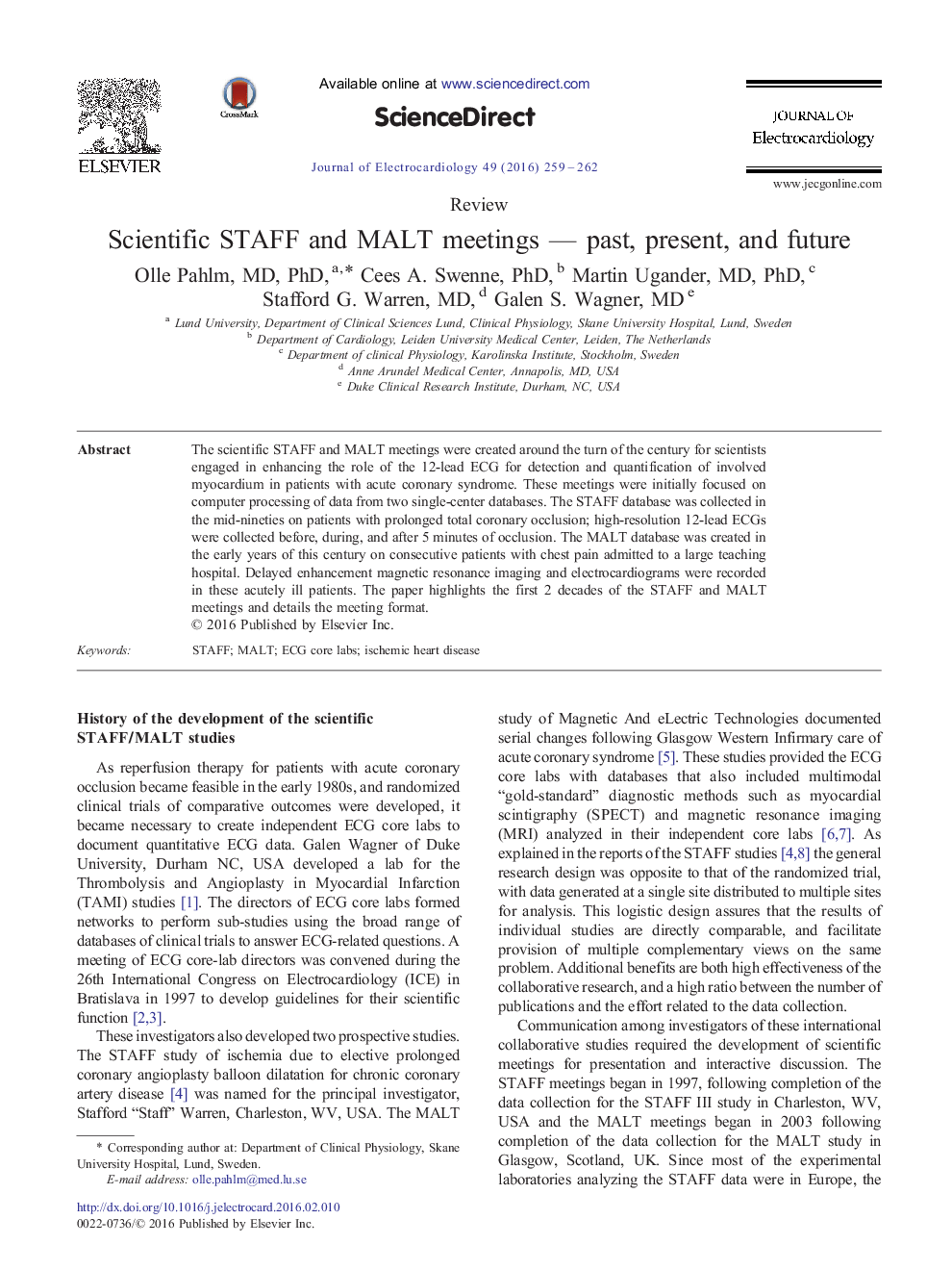| Article ID | Journal | Published Year | Pages | File Type |
|---|---|---|---|---|
| 5986180 | Journal of Electrocardiology | 2016 | 4 Pages |
â¢STAFF and MALT studies provided ECG core labs with databases that also included multimodal “gold-standard” diagnostic methods such as myocardial scintigraphy (SPECT) and magnetic resonance imaging (MRI) analyzed in their independent core labs.â¢The general research design is opposite to that of the randomized trial; with data generated at a single site distributed to multiple sites for analysis.â¢Communication among investigators of these international collaborative studies required the development of annual scientific meetings for presentation and interactive discussion.â¢Evolutionary growth that resulted from the success of the STAFF and MALT programs, has the potential to diminish their impact unless limited by leadership initiatives.â¢Key aspects of these boundaries are limitation of both the topics considered and participants of the annual meetings.
The scientific STAFF and MALT meetings were created around the turn of the century for scientists engaged in enhancing the role of the 12-lead ECG for detection and quantification of involved myocardium in patients with acute coronary syndrome. These meetings were initially focused on computer processing of data from two single-center databases. The STAFF database was collected in the mid-nineties on patients with prolonged total coronary occlusion; high-resolution 12-lead ECGs were collected before, during, and after 5 minutes of occlusion. The MALT database was created in the early years of this century on consecutive patients with chest pain admitted to a large teaching hospital. Delayed enhancement magnetic resonance imaging and electrocardiograms were recorded in these acutely ill patients. The paper highlights the first 2 decades of the STAFF and MALT meetings and details the meeting format.
